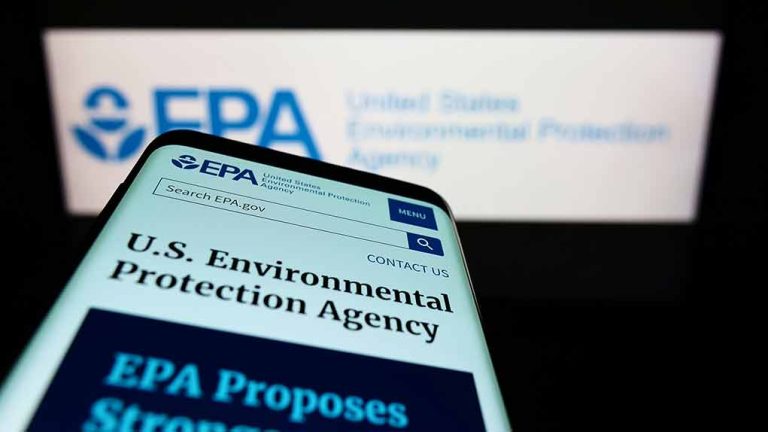Post-Roe America: How OTC Birth Control Changes The Landscape

Table of Contents
Increased Access and Reduced Barriers to Contraception
Limited access to healthcare providers, particularly in rural areas or for low-income individuals, previously hindered birth control access. The shift to over-the-counter (OTC) birth control significantly mitigates these challenges.
Geographic Limitations and Socioeconomic Factors
For many, obtaining birth control required navigating complex hurdles. These included:
- Reduced travel costs and time: No longer needing to travel to a clinic or doctor's office saves significant time and money, especially for those in rural areas with limited transportation options. This makes consistent contraceptive use more feasible.
- Elimination of appointment scheduling difficulties: The ability to purchase birth control when needed eliminates the need for appointments, reducing delays and missed opportunities for effective contraception. This is particularly beneficial for those with busy schedules or limited childcare options.
- Increased affordability due to potential lower prices: OTC birth control may offer lower prices compared to obtaining it through a doctor's visit or insurance plan, making it more accessible to low-income individuals. The potential for lower costs is a significant factor in improving access.
- Easier access for individuals in marginalized communities: OTC birth control can help break down barriers faced by marginalized communities who may encounter systemic biases or discrimination within traditional healthcare systems.
Privacy and Confidentiality Concerns
Privacy is a major concern for many when it comes to reproductive health. OTC birth control offers:
- Avoiding conversations with healthcare providers about personal reproductive choices: Individuals can avoid potentially uncomfortable or judgmental conversations with healthcare providers, fostering greater personal autonomy.
- Reduced risk of judgment or stigma: Purchasing OTC birth control discreetly reduces the risk of facing stigma or judgment, creating a more comfortable and empowering experience.
- Enhanced control over personal healthcare decisions: The ability to manage one's own contraceptive needs independently empowers individuals and contributes to better reproductive health outcomes.
Impact on Unintended Pregnancies and Abortion Rates
Increased access to OTC birth control has the potential to significantly impact unintended pregnancies and abortion rates.
Potential Reduction in Unintended Pregnancies
Improved access to contraception is directly linked to a reduction in unintended pregnancies. Studies have consistently shown this correlation.
- Improved contraceptive efficacy through consistent use: The ease of access to OTC birth control can lead to more consistent use, resulting in improved efficacy and fewer unintended pregnancies.
- Increased uptake of contraception due to convenience: The convenience of OTC access can encourage individuals to use contraception who might otherwise not have done so due to barriers like cost or access.
- Reduced reliance on less effective methods: With greater access to effective OTC options, individuals are less likely to rely on less effective methods, leading to a decrease in unintended pregnancies.
The Role of OTC Birth Control in Reducing Abortion Rates
The relationship between contraception and abortion rates is complex. While not a direct causal relationship, increased access to contraception is widely seen as a crucial strategy for reducing the need for abortions.
- Prevention as a primary strategy to reduce abortion need: By preventing unintended pregnancies, OTC birth control directly addresses the underlying cause of many abortions.
- Contraception as a critical component of comprehensive reproductive healthcare: Easy access to contraception is a cornerstone of comprehensive reproductive healthcare, ensuring that individuals have the tools they need to plan their families.
- The importance of considering other factors influencing abortion rates: It's crucial to acknowledge that social, economic, and cultural factors also play significant roles in abortion rates.
Challenges and Considerations Regarding OTC Birth Control
While the benefits of OTC birth control are significant, challenges remain.
Potential for Misinformation and Incorrect Usage
Self-medication carries inherent risks, especially with medications as sensitive as contraception.
- Need for clear and accessible educational resources: Comprehensive educational materials are crucial to ensure individuals understand how to use OTC birth control correctly and safely.
- Role of pharmacists and healthcare professionals in providing guidance: Pharmacists and healthcare professionals play a vital role in providing information and answering questions about OTC birth control options.
- Addressing potential for misuse or incorrect dosage: Public health campaigns and education initiatives must actively address the potential for misuse or incorrect dosage to ensure safe and effective use.
Ensuring Equitable Access for All Populations
Equitable access is paramount to ensure that all populations benefit from OTC birth control.
- Addressing potential disparities in access and awareness: Efforts must be made to address disparities in access based on race, ethnicity, socioeconomic status, and geographic location.
- Importance of culturally competent outreach programs: Culturally sensitive outreach programs are needed to ensure that information reaches and resonates with all communities.
- Governmental role in ensuring equitable distribution: Governmental bodies have a crucial role in ensuring equitable distribution and affordability of OTC birth control for all citizens.
Conclusion
The increased availability of over-the-counter birth control marks a significant turning point in reproductive healthcare access in post-Roe America. While offering unprecedented convenience and privacy, it also necessitates careful consideration of potential challenges, including misinformation and ensuring equitable access for all. By addressing these concerns and investing in comprehensive education and outreach, we can leverage the potential of OTC birth control to reduce unintended pregnancies and contribute to a healthier future. Learn more about the impact of over-the-counter birth control and how you can access these vital resources to promote reproductive health in your community. Understanding the implications of over-the-counter birth control is crucial in navigating the changing landscape of reproductive rights.

Featured Posts
-
 Judge Rules Against Section 230 Protection For Banned Chemicals On E Bay
Apr 22, 2025
Judge Rules Against Section 230 Protection For Banned Chemicals On E Bay
Apr 22, 2025 -
 Military Plan Disclosure Hegseths Signal Chat Controversy
Apr 22, 2025
Military Plan Disclosure Hegseths Signal Chat Controversy
Apr 22, 2025 -
 E Bay And Section 230 A Judges Ruling On Banned Chemical Listings
Apr 22, 2025
E Bay And Section 230 A Judges Ruling On Banned Chemical Listings
Apr 22, 2025 -
 Razer Blade 16 2025 Review Ultra Settings On A Thin Laptop High Price
Apr 22, 2025
Razer Blade 16 2025 Review Ultra Settings On A Thin Laptop High Price
Apr 22, 2025 -
 Trump Protests A Nationwide Uprising
Apr 22, 2025
Trump Protests A Nationwide Uprising
Apr 22, 2025
